Can A Persins Kidney Function Repair Itself
Acute kidney injury is a rapid (days to weeks) decline in the kidneys' ability to filter metabolic waste material products from the claret.
-
Causes include conditions that decrease blood catamenia to the kidneys, that damage the kidneys themselves, or that block drainage of urine from the kidneys.
-
Symptoms may include swelling, nausea, fatigue, itching, difficulty breathing, and symptoms of the disorder that caused the astute kidney injury.
-
Serious complications include eye failure and high levels of potassium in the blood.
-
Diagnosis is with claret and urine tests and ordinarily imaging studies.
-
Treatment involves correcting the cause of astute kidney injury and sometimes doing dialysis.
Acute kidney injury can result from whatever condition that decreases the claret supply to the kidneys, any affliction or toxic substances (also called toxins) affecting the kidneys themselves, or any condition that obstructs urine period anywhere forth the urinary tract.
In many people, no cause of acute kidney injury can be identified.
Symptoms depend on the
-
Severity of kidney function pass up
-
Rate of kidney function decline
-
Cause of kidney office decline
Early on symptoms include
-
H2o retentivity, causing weight proceeds and swelling of the feet and ankles or puffiness of the face and hands
-
Decreased corporeality of urine
The amount of urine (which for most healthy adults is between 3 cups [about 750 milliliters] and 2 quarts [virtually two liters] per day) ofttimes decreases to less than ii cups (about 500 milliliters) per 24-hour interval or stops completely. Very little urine production is called oliguria, and no urine production is called anuria. However, some people with acute kidney injury go on to produce normal amounts of urine.
Later, every bit astute kidney injury persists and waste products accumulate in the body, people may experience
-
Fatigue
-
Decreased ability to concentrate on mental tasks
-
Loss of ambition
-
Nausea
-
Overall itchiness (pruritus)
If acute kidney injury is acquired by a blockage (an obstruction), the backup of urine within the kidneys causes the drainage organization to stretch (a condition chosen hydronephrosis—come across figure Hydronephrosis—A Distended Kidney Hydronephrosis: A Distended Kidney  ). Urinary tract obstruction Urinary Tract Obstacle Urinary tract obstruction is a blockage that inhibits the flow of urine through its normal path (the urinary tract), including the kidneys, ureters, bladder, and urethra. Blockage can be consummate... read more oft causes a abiding dull ache under the lower ribs simply may cause crampy pain—ranging from mild to excruciating—usually along the sides (flanks) of the body. Some people with hydronephrosis have claret in their urine. If the obstruction is located below the bladder, the float will enlarge. If the bladder enlarges speedily, people are likely to feel severe hurting in the pelvis, just above the pubic bone. If the bladder enlarges slowly, pain may be minimal, but the lower role of the belly may smashing because of the enlarged bladder.
). Urinary tract obstruction Urinary Tract Obstacle Urinary tract obstruction is a blockage that inhibits the flow of urine through its normal path (the urinary tract), including the kidneys, ureters, bladder, and urethra. Blockage can be consummate... read more oft causes a abiding dull ache under the lower ribs simply may cause crampy pain—ranging from mild to excruciating—usually along the sides (flanks) of the body. Some people with hydronephrosis have claret in their urine. If the obstruction is located below the bladder, the float will enlarge. If the bladder enlarges speedily, people are likely to feel severe hurting in the pelvis, just above the pubic bone. If the bladder enlarges slowly, pain may be minimal, but the lower role of the belly may smashing because of the enlarged bladder.
If acute kidney injury develops during hospitalization, the condition often relates to some recent injury, surgery, drug, or illness such as infection. Symptoms due to the cause of the astute kidney injury may predominate. For example, high fever, life-threateningly low blood pressure (shock) Low Blood Pressure and Shock , and symptoms of eye failure Center Failure (HF) Heart failure is a disorder in which the center is unable to proceed up with the demands of the body, leading to reduced claret catamenia, back-up (congestion) of blood in the veins and lungs, and/or... read more 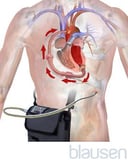 or liver failure Liver Failure Liver failure is severe deterioration in liver function. Liver failure is caused by a disorder or substance that amercement the liver. Nigh people have jaundice (yellowish pare and eyes), feel tired... read more may occur before symptoms of kidney failure and exist more obvious and urgent.
or liver failure Liver Failure Liver failure is severe deterioration in liver function. Liver failure is caused by a disorder or substance that amercement the liver. Nigh people have jaundice (yellowish pare and eyes), feel tired... read more may occur before symptoms of kidney failure and exist more obvious and urgent.
Some of the conditions that cause astute kidney injury also affect other parts of the torso. For example, granulomatosis with polyangiitis Granulomatosis with Polyangiitis Granulomatosis with polyangiitis often begins with inflammation of modest- and medium-sized claret vessels and tissues in the nose, sinuses, throat, lungs, or kidneys. The cause is unknown. The... read more 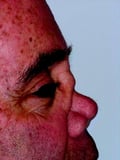 , which amercement blood vessels in the kidneys, may besides damage blood vessels in the lungs, causing a person to cough upward claret. Rashes are typical of some causes of acute kidney injury, including microscopic polyangiitis Microscopic Polyangiitis Microscopic polyangiitis is inflammation of mainly small blood vessels throughout the torso. Symptoms vary depending on which organs are affected. People accept a fever, lose weight, and have achy... read more , systemic lupus erythematosus Systemic Lupus Erythematosus (SLE) Systemic lupus erythematosus is a chronic autoimmune inflammatory connective tissue disorder that can involve joints, kidneys, pare, mucous membranes, and blood vessel walls. Problems in the... read more than
, which amercement blood vessels in the kidneys, may besides damage blood vessels in the lungs, causing a person to cough upward claret. Rashes are typical of some causes of acute kidney injury, including microscopic polyangiitis Microscopic Polyangiitis Microscopic polyangiitis is inflammation of mainly small blood vessels throughout the torso. Symptoms vary depending on which organs are affected. People accept a fever, lose weight, and have achy... read more , systemic lupus erythematosus Systemic Lupus Erythematosus (SLE) Systemic lupus erythematosus is a chronic autoimmune inflammatory connective tissue disorder that can involve joints, kidneys, pare, mucous membranes, and blood vessel walls. Problems in the... read more than 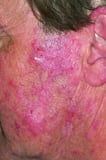 (lupus), and some toxic drug exposures.
(lupus), and some toxic drug exposures.
-
Blood and urine tests
-
Imaging tests
The doctor evaluates whether the person has acute kidney injury and, very importantly, its crusade.
The concrete examination findings may help doctors place the cause of the acute kidney injury. For case, enlarged or tender kidneys may indicate obstacle of the urinary tract causing hydronephrosis.
Blood tests that measure levels of creatinine and urea nitrogen in the blood are needed to confirm the diagnosis. A progressive daily rising in creatinine indicates acute kidney injury.
The level of creatinine is also the best indicator of the caste or severity of kidney function decline. The higher the level, the more than severe the turn down in kidney function is probable to be.
Other claret tests detect metabolic imbalances that occur if the decline in kidney function is severe, such as an increase in blood acidity (acidosis Acidosis Acidosis is caused by an overproduction of acid that builds up in the claret or an excessive loss of bicarbonate from the blood (metabolic acidosis) or by a buildup of carbon dioxide in the claret... read more than , which means low bicarbonate level), a high potassium level (hyperkalemia Hyperkalemia (Loftier Level of Potassium in the Blood) In hyperkalemia, the level of potassium in blood is also high. A high potassium level has many causes, including kidney disorders, drugs that affect kidney function, and consumption of besides much... read more ), a low sodium level (hyponatremia Hyponatremia (Depression Level of Sodium in the Blood) In hyponatremia, the level of sodium in blood is too low. A low sodium level has many causes, including consumption of as well many fluids, kidney failure, middle failure, cirrhosis, and utilise of diuretics... read more ), and a high phosphorus level (hyperphosphatemia Hyperphosphatemia (High Level of Phosphate in the Blood) In hyperphosphatemia, the level of phosphate in blood is as well high. (Meet as well Overview of Electrolytes and Overview of Phosphate'due south Role in the Body.) Phosphate is one of the body's electrolytes... read more ).
Urine tests, such as urinalysis and measurement of sure electrolytes (sodium, potassium, calcium, phosphate), may enable doctors to determine whether the cause of kidney injury is bereft blood flow to the kidneys, damage to the kidneys, or urinary obstruction.
Acute kidney injury and its immediate complications, such as water retentiveness, high acrid and potassium levels in the claret, and increased urea nitrogen in the blood, tin often exist treated successfully. Typically, prognosis is favorable for people whose acute kidney injury is due to decreased claret menstruation considering torso fluids have been lost through haemorrhage, airsickness, or diarrhea—weather condition that are reversible with treatment. Prognosis is worse for people in whom another organs (such as the centre, lungs, or liver) are failing at the same time. How long the person requires dialysis therapy Dialysis Dialysis is an artificial procedure for removing waste product products and excess fluids from the body, a process that is needed when the kidneys are not functioning properly. There are a number of reasons... read more 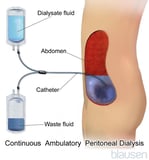 (for case, from days to life-long) depends on the person's overall health and kidney health before acute kidney injury develops.
(for case, from days to life-long) depends on the person's overall health and kidney health before acute kidney injury develops.
-
Treating whatsoever treatable causes
-
Restricting or adjusting doses of drugs eliminated through the kidneys
-
Sometimes dialysis
Some complications of acute kidney injury are serious and may even exist life-threatening. People may need to exist treated in a disquisitional care unit of measurement (likewise chosen an intensive care unit of measurement, or ICU).
Any treatable cause of acute kidney injury is treated as soon as possible. For instance, if obstruction is the cause, a catheter (a tube placed into the bladder to remove urine), cystoscopy (procedure to look inside the float with a camera to eliminate the blockage), or surgery may be needed to relieve the obstacle.
Oftentimes, the kidneys tin heal themselves, especially if the kidney injury has existed for just a few days and there are no complicating problems such as infection. During this time, measures are taken to foreclose the decreased kidney role from causing serious problems. Such measures may include the following:
-
Restricting use of certain drugs that may be harsh on the kidneys
-
Restricting fluids, sodium, phosphorus, and potassium in the diet
-
Maintaining good diet
-
Giving drugs if blood levels of potassium or phosphate are also loftier
-
Giving dialysis
Salt (sodium) and potassium intake is usually restricted. Fluid intake is restricted to replacing the amount lost from the body, unless fluid is needed because in that location is too little blood flowing to the kidneys. Weight is measured every day considering a change in weight is a proficient indicator of whether in that location is besides much or likewise trivial fluid in the trunk.
A healthy diet is provided to people whose condition allows them to eat. Moderate amounts of protein are acceptable, typically 0.8 to one gram per kilogram of body weight (0.4 to 0.five gram per pound) per mean solar day. Restricting the intake of foods that are high in phosphorus, such every bit dairy products, liver, legumes, nuts, and near soft drinks, lowers the phosphate concentration in the blood.
Potassium-lowering drugs are sometimes given by oral cavity or rectally to treat a high level of potassium in the blood. Phosphorus-lowering drugs (besides called phosphorus binders) may be given by oral cavity with meals to prevent or treat a high level of phosphorus in the claret.
Astute kidney injury may be prolonged, necessitating removal of waste matter products and excess h2o. Waste removal tin exist washed through dialysis, normally hemodialysis Hemodialysis Dialysis is an artificial process for removing waste product products and excess fluids from the body, a process that is needed when the kidneys are not functioning properly. There are a number of reasons... read more than  . If loss of kidney function is predicted to be prolonged or changes in diet and drug therapy are predicted to be ineffective, dialysis is started. Dialysis helps control the complications of acute kidney injury. Dialysis may be needed but temporarily, until the kidneys recover their function, usually in several days to several weeks, sometimes later on hospital belch. If the kidneys do not recover, dialysis (hemodialysis Hemodialysis Dialysis is an bogus procedure for removing waste products and backlog fluids from the body, a process that is needed when the kidneys are not functioning properly. There are a number of reasons... read more
. If loss of kidney function is predicted to be prolonged or changes in diet and drug therapy are predicted to be ineffective, dialysis is started. Dialysis helps control the complications of acute kidney injury. Dialysis may be needed but temporarily, until the kidneys recover their function, usually in several days to several weeks, sometimes later on hospital belch. If the kidneys do not recover, dialysis (hemodialysis Hemodialysis Dialysis is an bogus procedure for removing waste products and backlog fluids from the body, a process that is needed when the kidneys are not functioning properly. There are a number of reasons... read more  or peritoneal dialysis Peritoneal dialysis Dialysis is an artificial process for removing waste products and excess fluids from the torso, a process that is needed when the kidneys are not functioning properly. In that location are a number of reasons... read more than
or peritoneal dialysis Peritoneal dialysis Dialysis is an artificial process for removing waste products and excess fluids from the torso, a process that is needed when the kidneys are not functioning properly. In that location are a number of reasons... read more than  ) is continued indefinitely or kidney transplantation Kidney Transplantation Kidney transplantation is the removal of a healthy kidney from a living or recently deceased person and and so its transfer into a person with terminate-stage kidney failure. (Run across also Overview of Transplantation... read more than
) is continued indefinitely or kidney transplantation Kidney Transplantation Kidney transplantation is the removal of a healthy kidney from a living or recently deceased person and and so its transfer into a person with terminate-stage kidney failure. (Run across also Overview of Transplantation... read more than 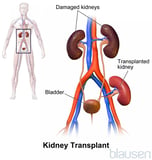 is pursued.
is pursued.
Fluids are non restricted in people who are recovering from acute kidney injury caused by obstruction. During the recovery period, the kidneys are unable to reabsorb sodium and water unremarkably, and a big corporeality of urine may exist produced for a menses of fourth dimension after the obstacle is relieved. During recovery, people may need replacement of fluids and also electrolytes, such as sodium, potassium, and magnesium.
Can A Persins Kidney Function Repair Itself,
Source: https://www.msdmanuals.com/home/kidney-and-urinary-tract-disorders/kidney-failure/acute-kidney-injury
Posted by: woodardoringlats.blogspot.com


0 Response to "Can A Persins Kidney Function Repair Itself"
Post a Comment